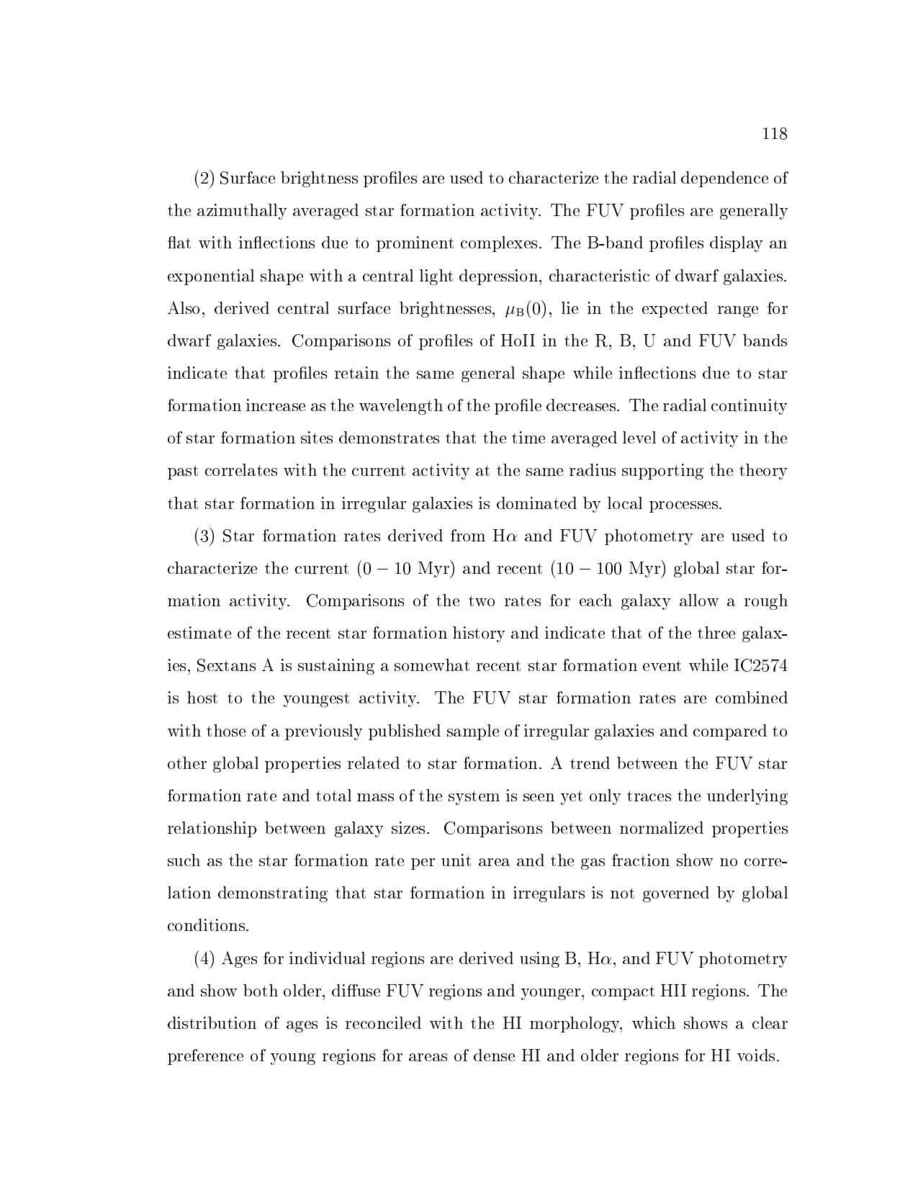
118
2 Surface brightness pro les are used to characterize the radial dependence of
the azimuthally averaged star formation activity. The FUV pro les are generally
at with in ections due to prominent complexes. The B-band pro les display an
exponential shape with a central light depression, characteristic of dwarf galaxies.
Also, derived central surface brightnesses,
B
0, lie in the expected range for
dwarf galaxies. Comparisons of pro les of HoII in the R, B, U and FUV bands
indicate that pro les retain the same general shape while in ections due to star
formation increase as the wavelength of the pro le decreases. The radial continuity
of star formation sites demonstrates that the time averaged level of activity in the
past correlates with the current activity at the same radius supporting the theory
that star formation in irregular galaxies is dominated by local processes.
3 Star formation rates derived from H and FUV photometry are used to
characterize the current 0
,
10 Myr and recent 10
,
100 Myr global star for-
mation activity. Comparisons of the two rates for each galaxy allow a rough
estimate of the recent star formation history and indicate that of the three galax-
ies, Sextans A is sustaining a somewhat recent star formation event while IC2574
is host to the youngest activity. The FUV star formation rates are combined
with those of a previously published sample of irregular galaxies and compared to
other global properties related to star formation. A trend between the FUV star
formation rate and total mass of the system is seen yet only traces the underlying
relationship between galaxy sizes. Comparisons between normalized properties
such as the star formation rate per unit area and the gas fraction show no corre-
lation demonstrating that star formation in irregulars is not governed by global
conditions.
4 Ages for individual regions are derived using B, H , and FUV photometry
and show both older, di use FUV regions and younger, compact HII regions. The
distribution of ages is reconciled with the HI morphology, which shows a clear
preference of young regions for areas of dense HI and older regions for HI voids.
